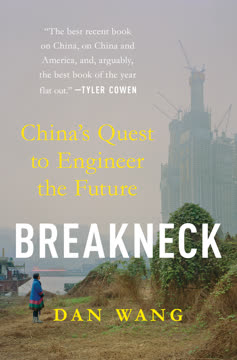Key Takeaways
1. The Engineering State vs. The Lawyerly Society: A Defining Contrast
China is an engineering state, building big at breakneck speed, in contrast to the United States’ lawyerly society, blocking everything it can, good and bad.
Core thesis. The author posits that the fundamental difference between China and the United States lies in their governing elites and their approach to societal challenges. China's leadership, historically dominated by engineers, prioritizes rapid, large-scale construction and social engineering. This "engineering state" is characterized by a "get-it-done" attitude, often at immense human and environmental cost.
Obstruction vs. Construction. In stark contrast, the United States is a "lawyerly society," where legal professionals dominate political leadership and public discourse. This leads to a system excelling at obstruction, proceduralism, and litigation, often delaying or preventing essential projects. The author highlights this by comparing:
- China's Beijing-Shanghai high-speed rail (built in 3 years for $36 billion)
- California's San Francisco-Los Angeles high-speed rail (17 years, $128 billion, still incomplete)
Consequences of approaches. While China's engineering state can achieve monumental physical improvements, it often disregards individual rights and well-being. The lawyerly society, though valuing individual protections, struggles with physical dynamism, leading to decaying infrastructure and a sense of societal stagnation. This fundamental difference shapes their economic, technological, and social trajectories.
2. China's Unstoppable Drive to Build: Infrastructure at Breakneck Speed
When Chinese point to new cities that shimmer at night with drone displays, or metropolises connected to each other by a glistening high-speed rail network, their pride is real.
Monumental achievements. China's engineering state has transformed its physical landscape with unparalleled speed and scale. Using Guizhou, one of China's poorest provinces, as an example, the author illustrates how even remote regions boast infrastructure superior to many wealthy Western nations. This building spree, fueled by state-led investment, has compressed over a century of Western development into mere decades.
Scale of construction:
- Highways: Twice the length of US systems since 1980.
- High-speed rail: Twenty times Japan's network, longer than the rest of the world combined.
- Ports: Shanghai alone moved more containers in 2022 than all US ports combined.
- Housing: Built new cities the size of New York + Boston every year for 35 years.
- Clean energy: Builds 1/3 to 1/2 of global solar and wind capacity annually.
Benefits and costs. This relentless construction has driven economic growth, facilitated urbanization, and significantly improved living standards for millions, forming a core plank of the Communist Party's legitimacy. However, it comes with massive debt burdens, environmental devastation, and a focus on monumentalism over livability. Projects like Liupanshui's "vanity projects" highlight the risks of growth-at-all-costs.
3. Process Knowledge: The Engine of China's Tech Power
At the heart of China’s ascendancy in advanced technology is its spectacular capacity for learning by doing and consistently improving things.
Beyond invention. The author argues that China's technological prowess stems not from groundbreaking invention, but from "process knowledge"—the proficiency gained from practical, hands-on experience. Shenzhen, the "Silicon Valley of hardware," exemplifies this, evolving from toy manufacturing to producing the world's most sophisticated electronics, like the iPhone. This ecosystem thrives on a dense network of factories, skilled engineers, and a massive, adaptable workforce.
Shenzhen's ecosystem:
- Rapid prototyping: Ability to quickly find suppliers for new components.
- Skilled labor: Hundreds of thousands of workers trained in sophisticated electronics assembly.
- Iterative improvement: Constant learning by doing on the factory floor.
- Peace dividends: Leveraging smartphone component advancements for other products (drones, EVs).
Industrial Party ideology. This focus on manufacturing and industrial technology is deeply embedded in China's political and intellectual landscape, championed by the "Industrial Party." This loosely affiliated group advocates for total mobilization of the economy towards science and technology, viewing it as the decisive force in national competition. Their vision, often bleak and technocratic, prioritizes survival and strength through industrial might.
4. The One-Child Policy: Social Engineering's Traumatic Legacy
The engineering state’s pursuit of the one-child policy produced more social pain than any of its other policies over the last half century.
Misguided scientism. The one-child policy, implemented in 1980, stands as a chilling example of the engineering state's social control. Driven by missile scientist Song Jian's cybernetics-based projections of demographic catastrophe, the policy aimed to reduce China's population to an "optimal" 700 million. This mechanistic thinking, detached from social realities and human emotions, was embraced by leaders like Deng Xiaoping who sought to control population to facilitate economic planning.
Brutal enforcement:
- Mass campaigns: 321 million abortions and 108 million female sterilizations over 35 years.
- Coercive tactics: Browbeating, fines, detention, property seizure, forced abortions (often late-term).
- Human cost: Female infanticide, sex-selective abortions (leading to 40 million "missing" women), child abandonment, and state-sanctioned kidnappings for adoption.
- Psychological scars: Deep anguish and rage among rural families, a sense of precarity.
Unnecessary and counterproductive. The policy was implemented despite fertility rates already declining due to earlier, less coercive family planning and economic development. Its true legacies are profound gender inequity, a rapidly aging population, and deep psychological trauma. Today, the state, facing demographic decline, is attempting to reverse course with pro-natalist policies, but finds women resistant to being lectured by old men to have more children.
5. Zero-Covid: A Microcosm of the Engineering State's Strengths and Flaws
The engineering state tried as hard as it could to hold on to earlier triumphs, until it was forced to let everything go.
Initial success, then catastrophe. China's zero-Covid strategy initially showcased the engineering state's capacity for rapid, decisive action, containing the virus in 2020 while the West struggled. However, as the virus evolved, the policy's literal-minded enforcement led to immense human suffering and economic disruption, culminating in the traumatic Shanghai lockdown of 2022.
Shanghai's ordeal:
- Sudden, unplanned lockdown: 25 million people confined for two months with no prior preparation.
- Food insecurity: Supply chains collapsed, leading to widespread hunger and reliance on community self-organization.
- Medical neglect: Hospitals prioritized Covid over all other conditions, leading to preventable deaths.
- Digital surveillance: Health codes, contact tracing, and drones enforced movement restrictions and suppressed dissent.
Abrupt reversal and aftermath. Despite escalating controls and suppression of dissent (e.g., "Voices of April," "white paper protests"), the highly transmissible Omicron variant proved uncontrollable, especially in Beijing. The policy was abruptly abandoned in late 2022, leading to a massive wave of infections, deaths, and a severe lack of fever medication. The experience left deep psychological wounds, particularly among urban elites, and exposed the state's disregard for individual well-being and its inability to admit error.
6. The "Rùn" Phenomenon: People Fleeing Fortress China
“China feels like a space in which the ceiling keeps getting lower,” Yiju told me one day. “To stay means that we have to walk around with our heads lowered and our backs hunched.”
Alienation and emigration. The "rùn" phenomenon, a Chinese slang word for fleeing, reflects a growing disillusionment among various segments of Chinese society. Young, creative professionals, wealthy families, and even desperate migrants are seeking lives abroad, driven by political repression, economic uncertainty, and the feeling of being "whipsawed by the engineering state’s violent mood swings."
Reasons for "rùn":
- Political controls: Censorship, surveillance, lack of free expression.
- Economic uncertainty: Property collapse, high youth unemployment, regulatory crackdowns on dynamic sectors.
- Trauma of zero-Covid: Indefinite confinement, food insecurity, state disregard for individual suffering.
- Desire for freedom: A yearning for personal agency and a less suffocating environment.
Fortress China. In response, Xi Jinping is doubling down on a "Fortress China" strategy, prioritizing self-reliance and national security over economic openness. This involves hardening the country against external threats, insulating it from global turbulence, and maintaining strict control over information and capital flows. While this strategy aims to make China resilient, it exacerbates the alienation that drives people to leave.
7. US Tech War: Unintended Boost for China's Self-Reliance
Rather than realizing its own Sputnik moment, the United States triggered one in China.
Counterproductive restrictions. The US trade and technology war, initiated under Trump and broadened by Biden, aimed to cripple Chinese tech firms and recover American technological primacy. However, these restrictions, which blacklisted companies and cut off access to American technologies, have largely backfired. Instead of collapsing, Chinese companies were "riled up to break free of American restrictions."
Strengthening domestic capacity:
- Forced localization: Chinese firms, previously reliant on American components, were compelled to seek domestic alternatives.
- Investment shift: Money and engineering talent that once flowed to the US now stays in China, funding local R&D.
- Talent repatriation: High-profile Chinese scientists, pushed by US investigations, are returning to China.
- Government support: Beijing is eagerly funding technology development, particularly in strategic industries like semiconductors and clean energy.
A new Cold War. The US approach has inadvertently accelerated China's drive for technological self-sufficiency, creating a "Sputnik moment" for Beijing. While the US aims to maintain its lead in innovation, China is steadily building a comprehensive industrial chain, aiming for "completionism" across all industrial categories. This contest is increasingly framed by China as a battle of political systems, where scientific and technological prowess determines superiority.
8. The Engineering State's Limits: Control, Culture, and Economic Distortion
The control neurosis of the engineers is the fundamental limit to China’s power.
The paradox of control. While the engineering state excels at building physical infrastructure and manufacturing capacity, its inherent "control neurosis" fundamentally limits China's broader power and appeal. Beijing's distrust and fear of its own people stifle creativity, leading to a lack of "lovable" cultural output that resonates globally.
Cultural and economic costs:
- Censorship: Suppresses alternative narratives, artistic expression, and even humor (e.g., the crushing of the comedy industry).
- Lack of soft power: China struggles to produce music, art, movies, or literature that captivates global audiences, unlike Japan or South Korea.
- Economic distortions: Regulatory crackdowns on digital platforms, property, and finance, while aiming to reorient talent to "harder" industries, have traumatized entrepreneurs and dampened animal spirits.
- Capital controls: Prevent the renminbi from becoming a global currency, limiting financial influence.
Self-inflicted wounds. The engineering state's solutions often create new problems, resembling "skilled firefighters who douse blazes they themselves ignited." This cycle of overreach and correction, driven by a top-down, centralized approach, alienates its own citizens and hinders China's potential to displace the US as a preeminent global power, despite its manufacturing might.
9. America's Path Forward: Reclaiming its Building Ethos
The United States has to do two things to overcome the lawyerly society.
Reversing stagnation. The United States, currently hampered by its "lawyerly society," needs to reclaim its historical "engineering ethos" to address pressing challenges like climate change, economic inequality, and decaying infrastructure. The author argues that the country's inability to build at scale is a critical weakness, risking commercial and military vulnerability against China.
The need to build:
- Manufacturing capacity: Reconstituting communities of engineering practice to relearn mass production and scale up innovation.
- Affordable housing: Overcoming procedural obstacles to build more homes, especially in prosperous cities, to address cost burdens and segregation.
- Modern infrastructure: Investing in and efficiently executing projects for mass transit, energy, and broadband, learning from countries that balance consultation with construction.
Lessons from the past. Figures like Robert Moses (despite his flaws) and Admiral Hyman Rickover exemplify a past American commitment to large-scale, government-led projects delivered efficiently. The author urges the American left to move beyond mid-century problems and the right to remember government's capacity for wonders, rather than dismantling it.
10. Pluralism and Individual Rights: The West's Enduring Advantage
The ultimate reason to be hopeful for the United States is that it can look to its own history to see the path forward.
The strength of diversity. The United States' most important virtue is its commitment to pluralism—the coexistence and thriving of diverse cultures under equal protection. This allows for a multitude of voices, including lawyers, engineers, economists, and humanists, to debate and shape policy, fostering intellectual antibodies against misguided "scientific" solutions that can lead to social immiseration.
China's fundamental limit. In contrast, China's engineering state, with its deep-seated distrust of its own people and lack of a liberal tradition, struggles to embrace individual agency. While it can achieve impressive material gains, its inability to tolerate dissent and its constant imposition of state designs on bodies, speech, and minds ultimately limit its potential for flourishing and global appeal.
A call for transformation. The author concludes with a hopeful vision for the US: to embrace its "transformational urge" by building more, valuing pluralism, and unwinding the dominance of proceduralism. By declaring itself a "developing country," the US can shed the complacency of "developed" status and focus on unlocking human potential, demonstrating that a democracy can effectively govern and build for its people, a path China, despite its strengths, cannot fully emulate.
Last updated:
FAQ
What’s Breakneck: China’s Quest to Engineer the Future by Dan Wang about?
- China’s transformation focus: The book examines China’s rapid modernization and rise as a global power, emphasizing its engineering-driven approach to governance and development.
- Engineering state vs. lawyerly society: Wang contrasts China’s “engineering state” with the United States’ “lawyerly society,” exploring how these models shape infrastructure, innovation, and social policy.
- Personal and analytical blend: Drawing on his experiences in China, the U.S., and Canada, Wang combines memoir, policy analysis, and cultural observation to provide a nuanced portrait of China’s ambitions and challenges.
- Key topics covered: The narrative addresses major policies like the one-child policy, zero-Covid strategy, tech regulation, and the country’s manufacturing boom.
Why should I read Breakneck: China’s Quest to Engineer the Future by Dan Wang?
- Unique insider perspective: Wang’s firsthand experiences living in China during pivotal moments, such as the Shanghai lockdown, offer rare insights into daily life under state policies.
- Fresh analytical framework: The book introduces the “engineering state” vs. “lawyerly society” lens, moving beyond traditional capitalist/socialist labels to explain global competition.
- Balanced critique and optimism: Wang acknowledges both China’s material achievements and its authoritarian excesses, encouraging mutual learning between China and the U.S.
- Accessible and comprehensive: The book makes complex topics like digital surveillance, manufacturing, and demographic policy understandable for a broad audience.
What are the key takeaways from Breakneck: China’s Quest to Engineer the Future by Dan Wang?
- Governance shapes outcomes: The engineering state enables rapid building and control, while the lawyerly society values process and rights, each with distinct strengths and weaknesses.
- Material progress vs. individual rights: China’s focus on infrastructure and manufacturing has driven growth but often at the expense of personal freedoms and social well-being.
- Policy consequences: Top-down policies like the one-child and zero-Covid strategies have profound, sometimes unintended, social and demographic impacts.
- Need for balance: Wang suggests that combining pluralism with effective engineering is crucial for future national success.
How does Dan Wang define the “engineering state” in Breakneck: China’s Quest to Engineer the Future?
- Technocratic governance: The engineering state prioritizes large-scale physical projects, centralized planning, and technical problem-solving over political debate.
- Measurable outcomes focus: It values tangible results—like infrastructure, manufacturing capacity, and pandemic control—often using digital surveillance and mass mobilization.
- Literal-minded enforcement: Policies are pursued with rigid, sometimes harsh, measures, with less regard for social costs or individual rights.
- Self-limiting features: While effective at building and control, the engineering state struggles with pluralism, creativity, and legal protections.
How does Dan Wang contrast China’s “engineering state” with the U.S. “lawyerly society” in Breakneck: China’s Quest to Engineer the Future?
- Engineering state traits: China’s leadership, dominated by engineers, excels at rapid construction, manufacturing, and centralized control, often suppressing dissent for efficiency.
- Lawyerly society traits: The U.S. is characterized by legalism, pluralism, and procedural safeguards, which protect rights but can impede large-scale projects.
- Strengths and weaknesses: China’s model enables physical dynamism but risks overreach and repression; the U.S. model fosters debate and rights but can lead to stagnation.
- Call for balance: Wang advocates for integrating engineering dynamism with pluralistic values to achieve effective governance.
What is the significance of Shenzhen in China’s technological rise according to Breakneck: China’s Quest to Engineer the Future by Dan Wang?
- Manufacturing powerhouse: Shenzhen evolved from a fishing village into a global center for electronics manufacturing, hosting giants like Foxconn.
- Ecosystem of innovation: The city’s dense network of suppliers, engineers, and workers enables rapid prototyping, problem-solving, and scaling of new products.
- Process knowledge hub: Shenzhen exemplifies how technological advancement relies on communities of practice and hands-on expertise, not just invention.
- Symbol of ambition: The city’s transformation reflects China’s broader strategy of learning by doing and building technological capabilities through manufacturing.
How does Breakneck: China’s Quest to Engineer the Future by Dan Wang explain the one-child policy and its consequences?
- Technocratic origins: The policy was designed by engineers and scientists using demographic modeling, aiming to prevent resource shortages through strict population control.
- Coercive enforcement: Implementation involved forced abortions, sterilizations, and heavy fines, causing widespread trauma and human rights abuses.
- Demographic challenges: The policy led to an aging population, gender imbalances, and a shrinking workforce, complicating China’s future stability.
- Enduring legacy: Despite policy reversals, low fertility rates persist, and the state now struggles to encourage births amid societal exhaustion.
What insights does Breakneck: China’s Quest to Engineer the Future by Dan Wang provide about China’s zero-Covid policy?
- Strict pandemic control: The zero-Covid strategy used mass testing, lockdowns, and digital surveillance to pursue zero infections, enforced with military-like discipline.
- Personal account: Wang describes living through the Shanghai lockdown, highlighting food shortages, medical neglect, and the role of mutual aid networks.
- Social and economic costs: The policy caused frustration, protests, and hardship, with its abrupt end leading to a massive, unprepared Covid wave.
- Model limitations: The experience exposed the engineering state’s strengths in mobilization but also its rigidity and lack of flexibility.
How does Breakneck: China’s Quest to Engineer the Future by Dan Wang describe China’s manufacturing and infrastructure capabilities?
- Global manufacturing leader: China dominates sectors like electric vehicles, solar panels, batteries, and robotics, supported by vast supply chains and skilled labor.
- Infrastructure achievements: The country has built extensive high-speed rail, highways, and ports at unmatched speed and scale, fueling economic growth.
- Resilience over efficiency: China invests in redundancies and shock buffers, prioritizing self-sufficiency in energy and food security.
- Geopolitical influence: Infrastructure expertise is exported through initiatives like Belt and Road, extending China’s global reach.
What does Breakneck: China’s Quest to Engineer the Future by Dan Wang reveal about the social and cultural impact of China’s governance model?
- Pervasive social control: Digital surveillance, contact tracing, and mass mobilization create a strong state presence, limiting privacy and freedoms.
- Cultural suppression: Political paranoia and censorship stifle creativity, humor, and dissent, with artists and comedians facing penalties for nonconformity.
- Public adaptation: Many Chinese accept or adapt to state control due to improved living standards, but exhaustion and protest are rising, especially among youth.
- Strained social fabric: The tension between material progress and individual rights is a recurring theme in Wang’s analysis.
What insights does Breakneck: China’s Quest to Engineer the Future by Dan Wang provide about China’s tech industry and regulatory crackdown?
- Rapid tech growth: China’s tech sector produced global giants like ByteDance, with a vibrant startup ecosystem.
- Regulatory storm: Under Xi Jinping, the government imposed strict regulations for antitrust, data security, and ideological conformity, curbing tech company power.
- Economic and cultural impact: The crackdown wiped out trillions in market value, dampened entrepreneurial spirit, and redirected focus to advanced manufacturing.
- Political discipline: The Communist Party’s actions reflect the engineering state’s preference for control and tangible production over digital platforms.
What lessons does Dan Wang offer for the United States in Breakneck: China’s Quest to Engineer the Future?
- Rebuild physical dynamism: The U.S. must invest in infrastructure, manufacturing, and housing to regain global competitiveness and economic vitality.
- Balance pluralism and engineering: Elevating engineers and builders alongside lawyers can help the U.S. overcome procedural gridlock and enable effective governance.
- Learn from China’s experience: By studying both the successes and failures of China’s engineering state, America can chart a path that combines innovation, pluralism, and robust infrastructure.
- Renew optimism: Wang calls for a renewed American commitment to ambitious public works and trust in institutions, moving from stagnation to transformation.
What are the best quotes from Breakneck: China’s Quest to Engineer the Future by Dan Wang and what do they mean?
- On the engineering state: “China is an engineering state, not a lawyerly society.” This encapsulates Wang’s central thesis about the country’s governance model and its implications.
- On social engineering: “The one-child policy was the world’s largest social experiment, and its consequences are still unfolding.” This highlights the far-reaching impact of technocratic policies.
- On U.S.-China comparison: “America’s problem is not that it builds too much, but that it builds too little.” Wang urges the U.S. to reclaim its tradition of ambitious development.
- On optimism and learning: “We should be curious about each other, and learn from each other’s strengths.” Wang advocates for mutual understanding and adaptation between superpowers.
Review Summary
Breakneck receives mostly positive reviews for its insightful analysis of China's development and comparison with the US. Readers appreciate Wang's unique perspective, balancing praise and criticism of both countries. The book's central thesis, contrasting China's "engineering state" with America's "lawyerly society," sparks interest and debate. Some reviewers find the argument oversimplified but still valuable. Many highlight the book's engaging writing style and personal anecdotes. Critics note potential inaccuracies and a lack of depth in certain areas. Overall, it's considered an important read for understanding modern China and US-China relations.
Similar Books

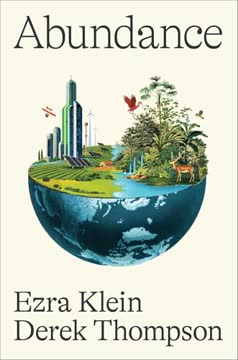

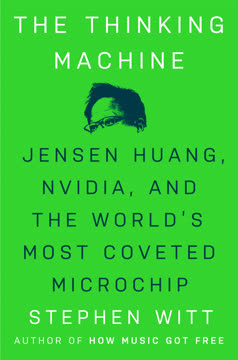
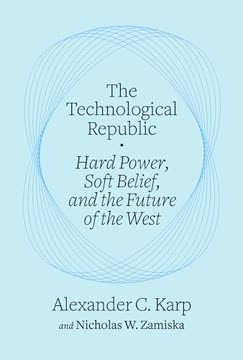
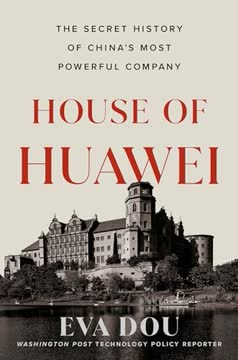
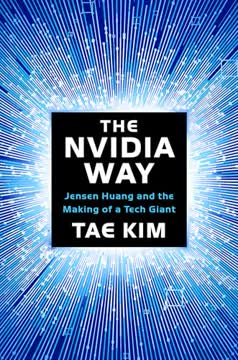
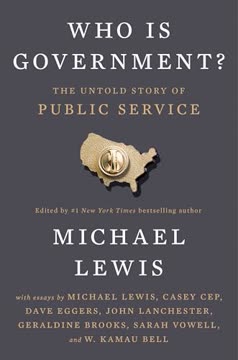
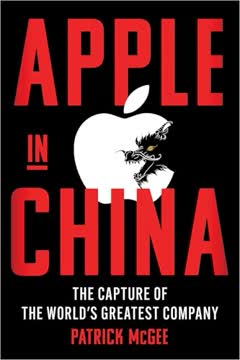
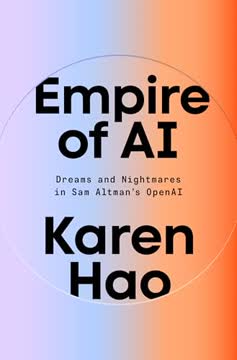
Download PDF
Download EPUB
.epub digital book format is ideal for reading ebooks on phones, tablets, and e-readers.
